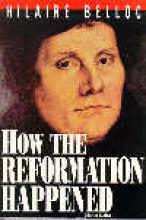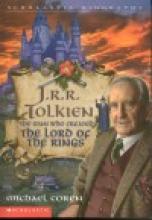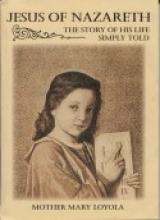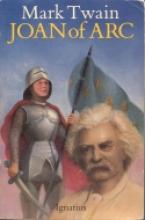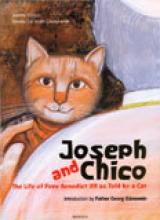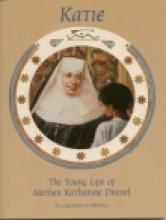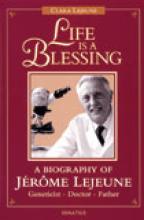Biographies
How the Reformation Happened
This book is a surprisingly readable and interesting account of "How the Reformation Happened". Although it is written from a Catholic perspective, Mr. Belloc is very fair in dishing out the blame to the appropriate people on both sides. The years covered are 1517 (when Martin Luther affixed his protest against the Indulgences to a church door in Wittenberg, Germany) to 1648, but also includes commentary of the implications of the "Reformation" on our own times. He covers all the major countries involved and is very skilled at explaining the essentials of what happened and the lessons we should take from it. This is the answer for homeschoolers looking for the whole story of what is so often misrepresented in History texts - whether Protestant or Secular. It makes good reading for adults who are teaching younger children or for high schoolers to read on their own. Includes a complete index.
In This Sign Your Shall Conquer
85 minutes
J.R.R. Tolkien
Michael Coren skillfully recounts Tolkien's life - growing up as an orphan, his lasting interest in language and learning and his battle experience in World War I. All the way through he includes interesting and enlightening details - especially ones that we will recognize as relevant to Tolkien's stories. Despite the secular publisher, Tolkien's faith is discussed in some detail (and quite fairly) with Joseph Pearce's book, Tolkien: Man and Myth, (Ignatius Press) featured as a prominent source. Coren does include brief summaries of the Hobbit and the Lord of the Rings which include some real plot-spoilers for those who haven't yet read them (they also aren't the most accurate book summaries I've ever read). I would suggest reading this biography after already having read The Hobbit and the Lord of the Rings. Although intended for youth reading, the story is delightful and interesting for adults (as well as a nice quick read).
Jesus of Nazareth
There is no substitute for reading the story of Christ's life in the Gospels themselves. First hand sources are always the best, but this book can assist in developing a more complete understanding and familiarity with the life of Jesus. The author is obviously well-acquainted with the geography, history and culture of Palestine and its people and gives us many of these sort of details which are not explained in the Bible. She is also well-versed in the Bible - particularly Our Lord's life and the foreshadowing and prophecies of the Old Testament related to it. I found the details of how Jesus fulfilled the Old Testament prophecies particularly fascinating.
The story is very beautifully written and the events are related in terms of what we know from the biblical accounbts, relevant prophecies and considerations and meditations on why Our Lord did certain things and what He and others may have been thinking about each event.
Some may dispute the "Simply Told" aspect of the title because of a certain amount of antiquated language. Be assured that definitions given in the footnotes (at the bottom of each page)are very helpful. Footnoted scriptural references allow for a more easy comparison of the relevant passages from the original text. The author shows some reluctance (as seems rather common with authors of that time period) to discuss certain events connected with the Annunciation and the Incarnation such as Saint Joseph's thought of divorcing Mary when he found that she was with child and his reassurance by an angel in a dream.
I think this book would make a rather nice family read-aloud during Lent. We found it very nice (even for our six year old) when we read a chapter or two at a time (the chapters are rather short) and spent some time discussing events as we went along.
Joan of Arc
While I used Mark Twain's Joan of Arc as a read-aloud, I used Poole's version for the younger children. Also, the pictures and map really complimented Twain's book.
Joan of Arc
So who is qualified to tell this story? Another saint? A theologian? A soldier? What about just a good American story-teller -- indeed the best -- but a man with hardly any faith at all?
Mark Twain is most famous for his Mississippi River stories, Tom Sawyer and Huckleberry Finn. It is not well enough known that his own favorite of all his works was the life of St. Joan of Arc, told from the fictional perspective (but this is the only fiction in the book) of a childhood companion who accompanied her on her wars, and then smuggled himself into her trials as a court reporter and was the last to touch her hand before she died.
Mark Twain really loved Joan and he dedicated the entire fiber of his wonderful talent to telling her story. I see him in the year 1910, knocking at the Pearly Gates, and I see Peter's hesitation, for Twain was after all, something of an unbelieving old cynic. But over Peter's shoulder, I see a slight and mischievous lass tugging his sleeve and saying with a grin, "Let him in, now, let him in!" while a Voice thunders from the Throne, "Any friend of Joan's is a friend of Mine."
Read it yourself, silently or aloud to the family, and see if you don't agree.
Joseph and Chico, The Life of Pope Benedict XVI as Told by a Cat
Katie: The Young Life of Mother Katherine Drexel
Katherine Mary Drexel (Katie) was born to a wealthy Catholic family of Philadelphia, Pennsylvania, in 1858. As a child she had everything she could wish for - a beautiful playhouse with "carpets, child-size furniture and even a full kitchen." Her parents and her teachers (the sisters from the convent nearby) instilled in her a love for Jesus, and especially the Blessed Sacrament. She struggled with many things familiar to families today - such as trying to understand why she had three sets of grandparents (her own mother died just after Katie was born and her father remarried). The story (which is the style of a first-person narrative - i.e. from the viewpoint of Katie herself) provides warm and personal details about the developing spiritual life of a child which provide an excellent example for young readers in counting their blessings and using their talents for good.
Katie and her two sisters lost their parents when they were still young ladies. Left with a vast fortune, they had to make decisions about suporting charitable organizations. Katie became interested in Missions on American Indian Reservations. Eventually she founded an order of nuns - the Sisters of the Blessed Sacrament. During her lifetime she "opened, staffed, and directly supported nearly sixty schools and missions" and dedicated her life to helping Native and African Americans throughout the United States.
This book includes the story (along with a picture) of two children who prayed to Mother Katherine Drexel for a cure for their little sister. Her miraculous cure was accepted by the Vatican as a true miracle in the investigation process for her canonization. The book also includes many charming black and white photos of Katie and her family, a chronology of her life, and a glossary.
Besides the worthwhile story of a great American saint, the book gives us a glimpse of life in 19th century America. Although many particulars of a Catholic family life are familiar to us today, evidence of the Victorian era are present in instances such as how the nurse explains to the children that their new little sister was brought by angels who visited their mama and papa during the night. The story is charming and gives the reader the feeling that they are really getting to know Mother Drexel very personally. Although I was disappointed with previous writings of Mrs. Mohan (I believe it was because I found the stories too terse, too brief) I thought this story was quite nice and I also appreciate the numerous black and white photos which make for an attractive and appealing book.
Life is a Blessing
Originally published in French by Criterion, Paris, 1997.

